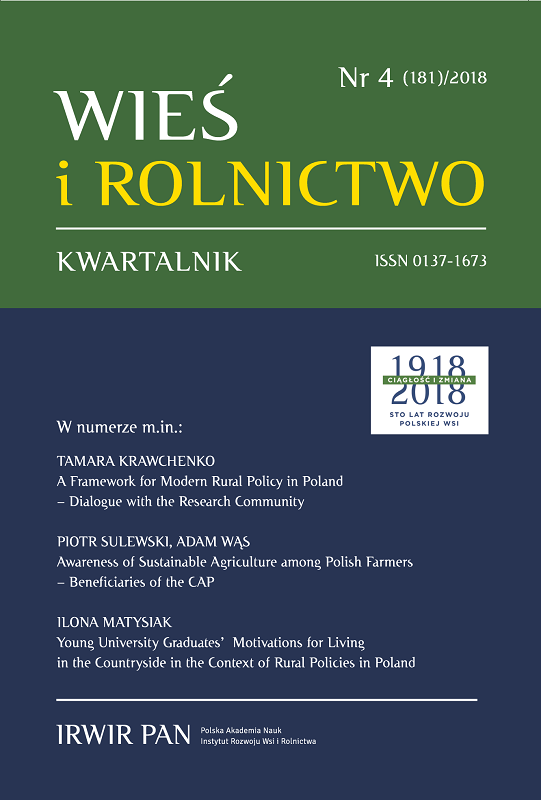Commercial Farms in Polish Metropolitan Areas: Changes in Production Factors
Commercial Farms in Polish Metropolitan Areas: Changes in Production Factors
Author(s): Tomasz Wojewodzic, Wojciech SrokaSubject(s): Politics, Agriculture, Sociology, EU-Legislation
Published by: Instytut Rozwoju Wsi i Rolnictwa Polskiej Akademii Nauk
Keywords: commercial farms; metropolitan area; production factors; location
Summary/Abstract: Both the literature and economic practice increasingly note differences in adap -tation processes taking place in farms operating in the immediate proximity of large citiesand other commercial farms. In areas where urbanisation and metropolisation processes areongoing, agriculture not only faces a number of obstacles, but also many opportunities, andas a result processes of structural change are very rapid here. The identification of tendenciesto changes in resources of farm production factors may constitute a basis for developingvery useful research in Poland aimed at the introduction of appropriate developmentstrategies for urban and peri-urban agriculture. The aim of this paper is to present directionsof changes in production factors of commercial farms operating in six selected Polishmetropolitan areas (MA). Detailed analyses covered 189 farms in six Polish metropolitanareas. The farms researched from 2004 to 2016 provided continuous data to the FarmAccountancy Data Network (FADN). The comparative material used in the analyses covered1665 farms outside of metropolitan areas. The analyses of commercial farms’ productioncapacity have shown that farms in MA inner zones (in immediate proximity of the city core)in 2004 possessed larger average resources of land, labour and capital. Between 2004 and2016, production capacities of farms in the inner and outer zones of the MA evened out toa large extent. However, their average potential was still bigger compared to farms outsideof metropolitan areas. Observation of ongoing changes has confirmed that the biggestpercentage of farms reducing land, labour and capital resources was in the inner zone,which confirms the existence of barriers to their further development, i.e. limited supplyof land and high opportunity cost of labour, among other things. It seems that these farmshave to look for alternative development paths, namely they should focus on diversificationand the development of non-agricultural services.
Journal: Wieś i Rolnictwo
- Issue Year: 181/2018
- Issue No: 4
- Page Range: 91-109
- Page Count: 19
- Language: English

